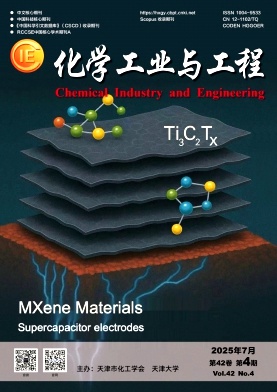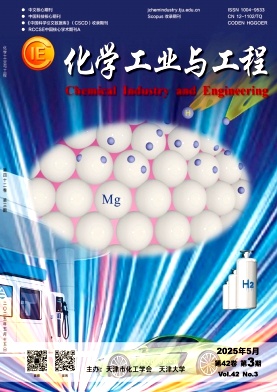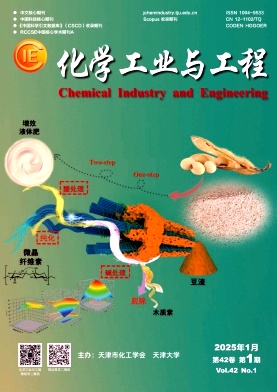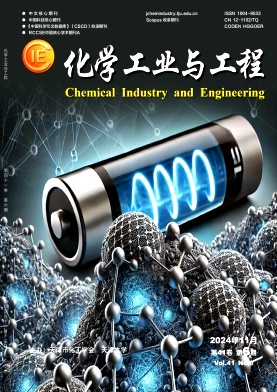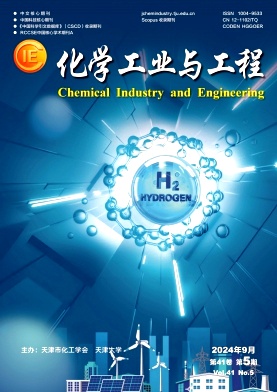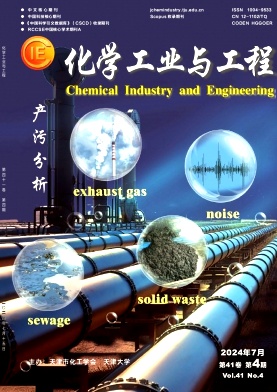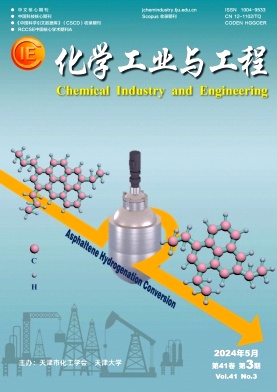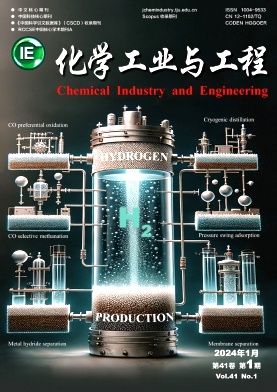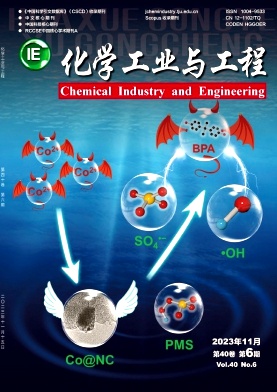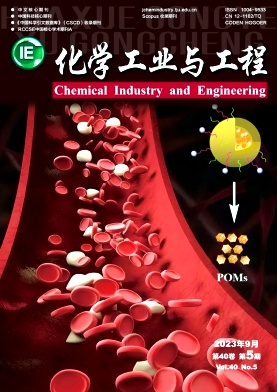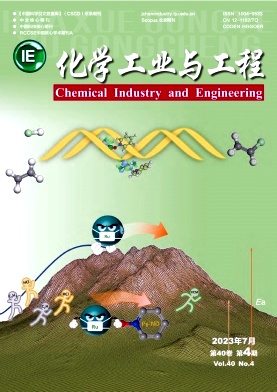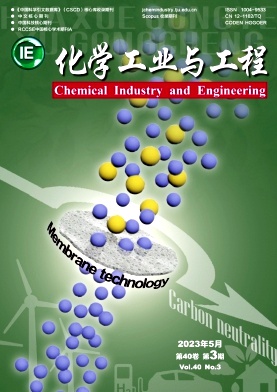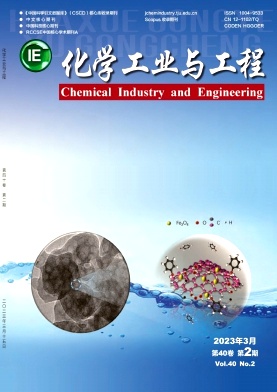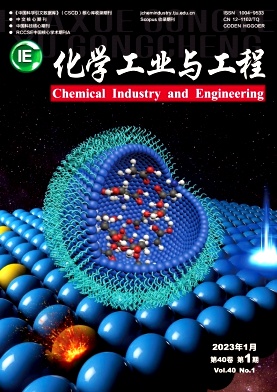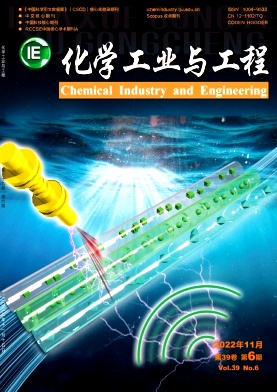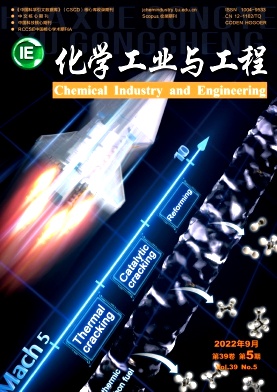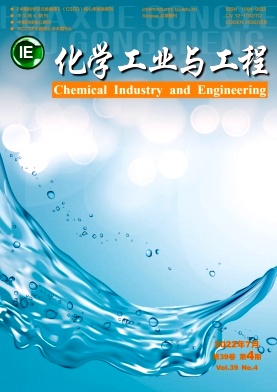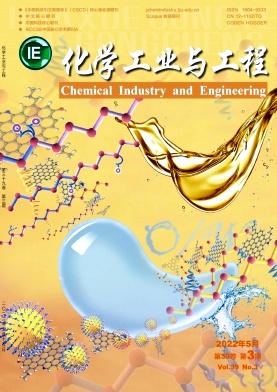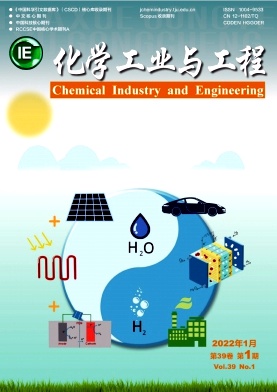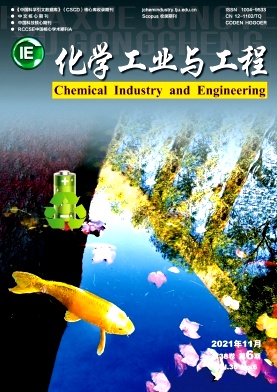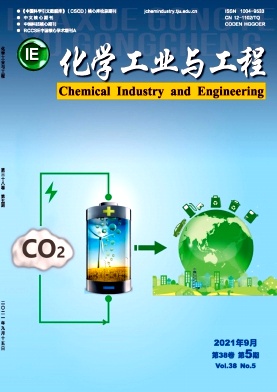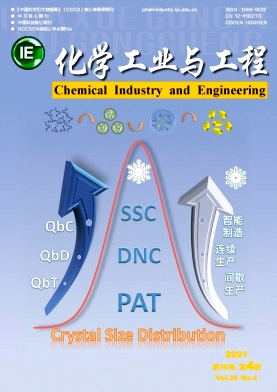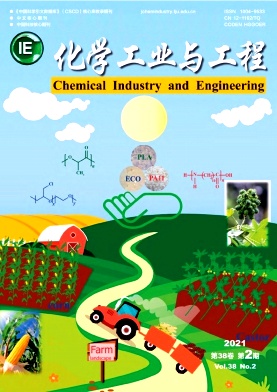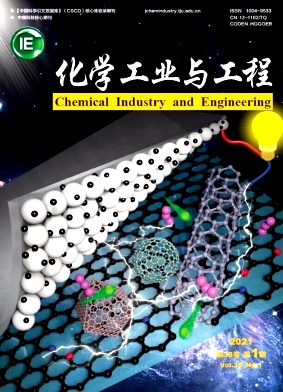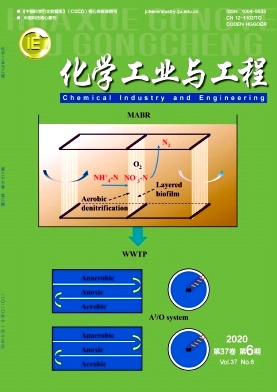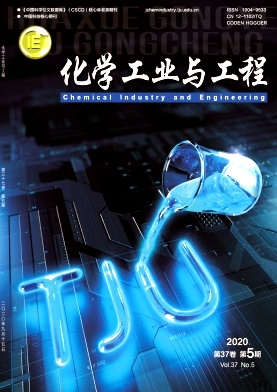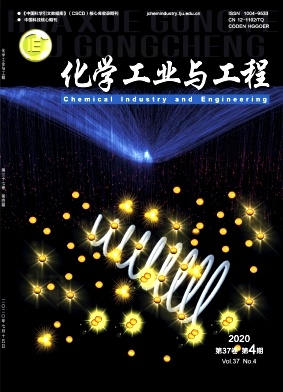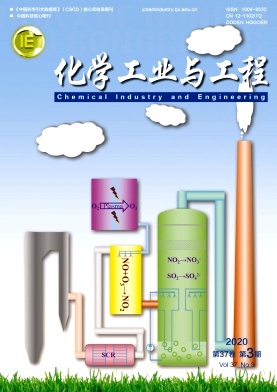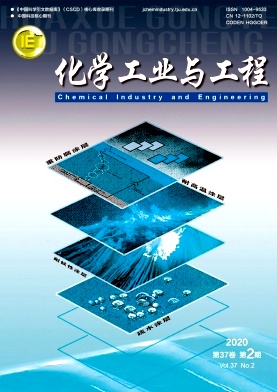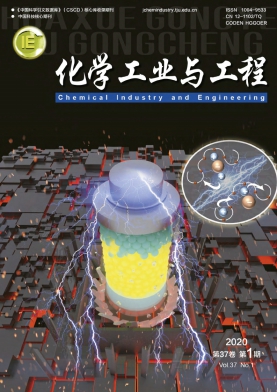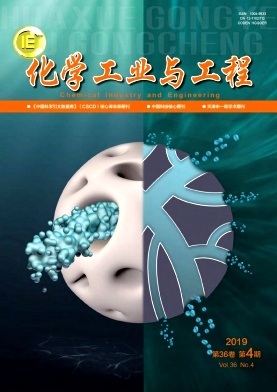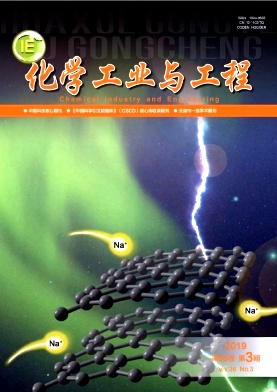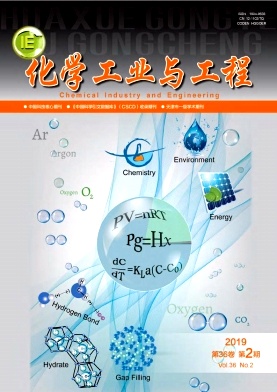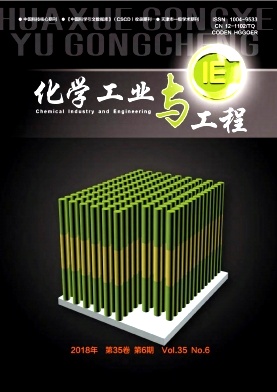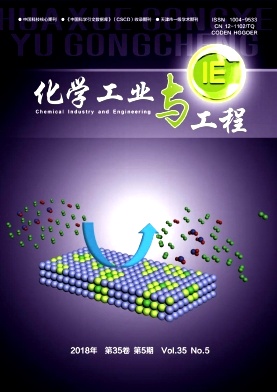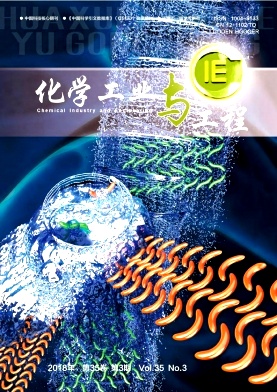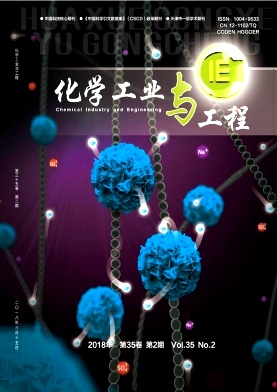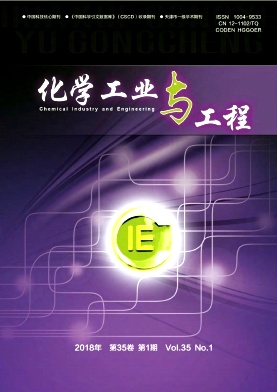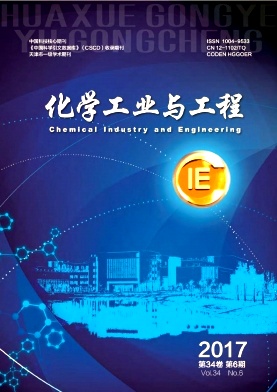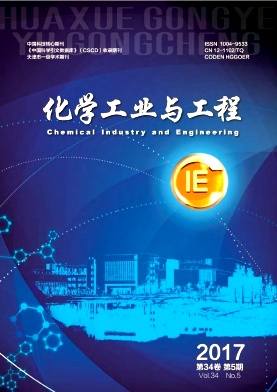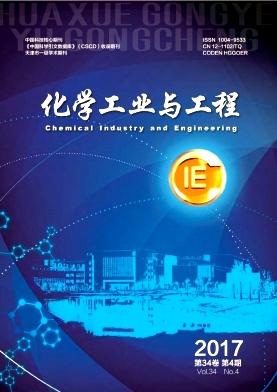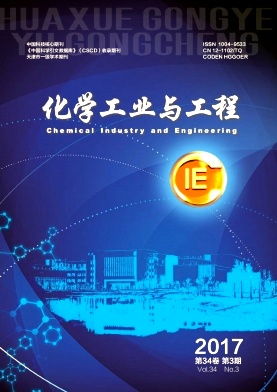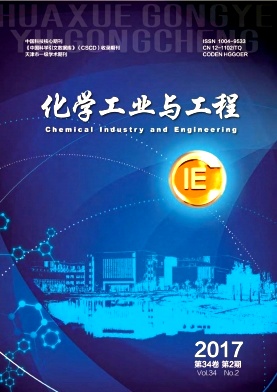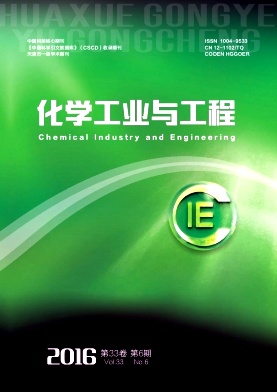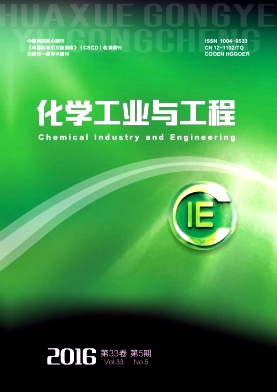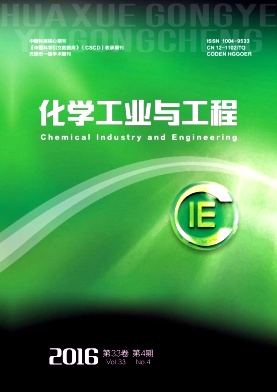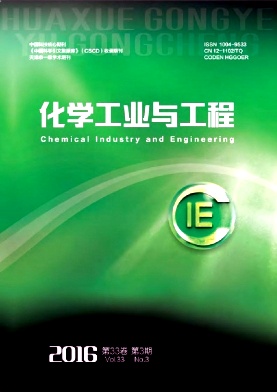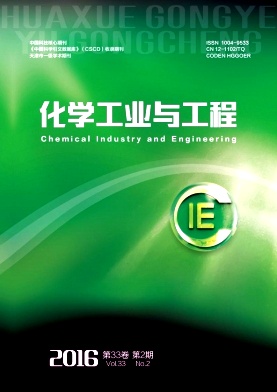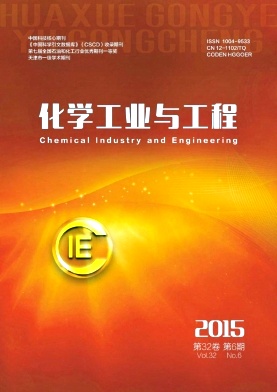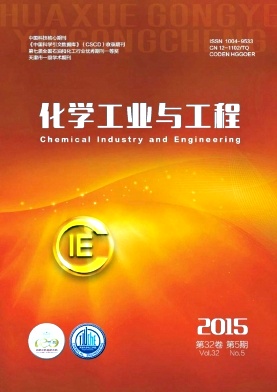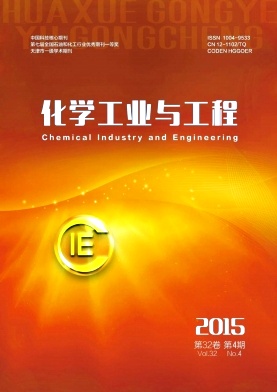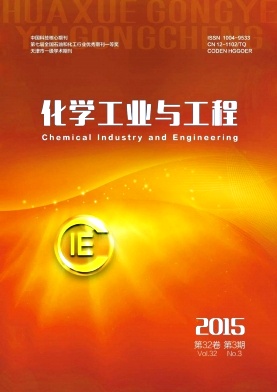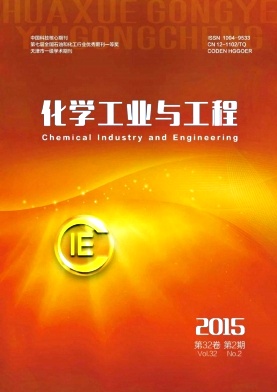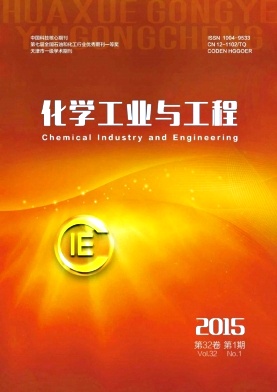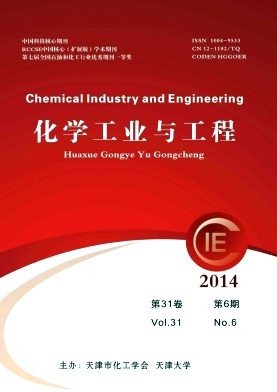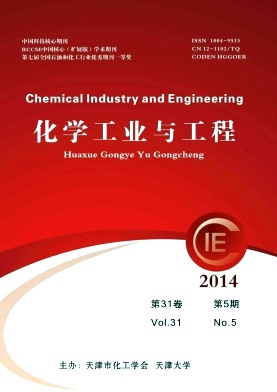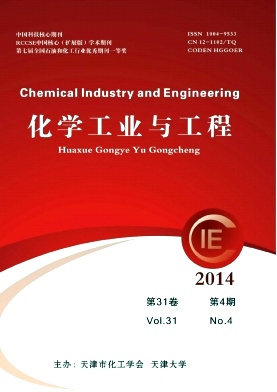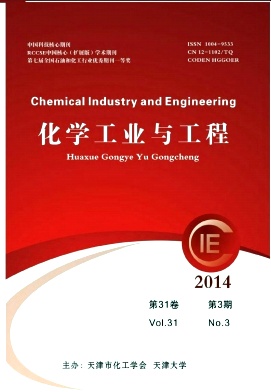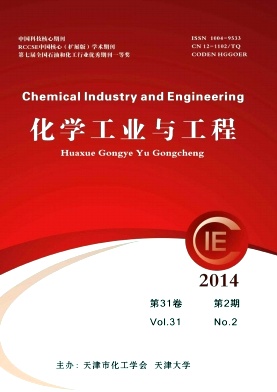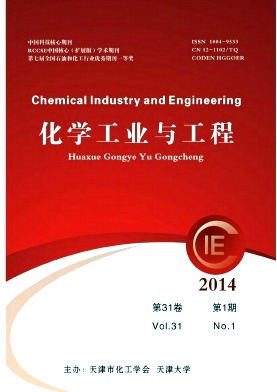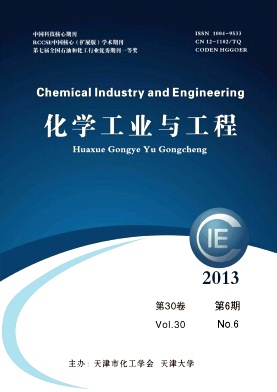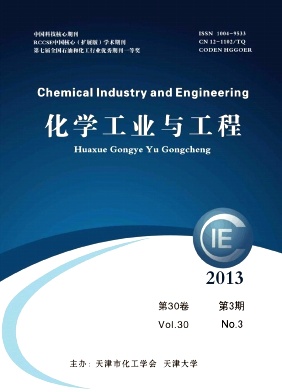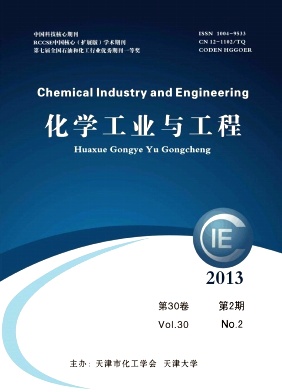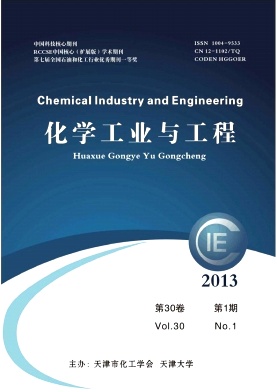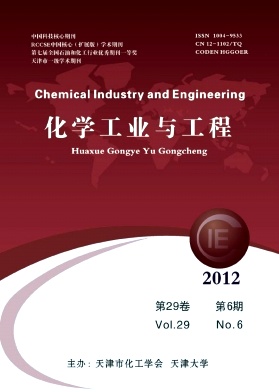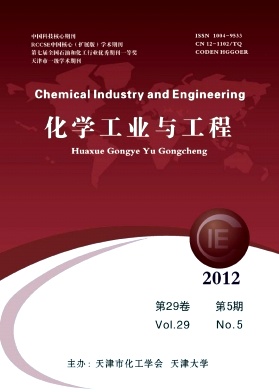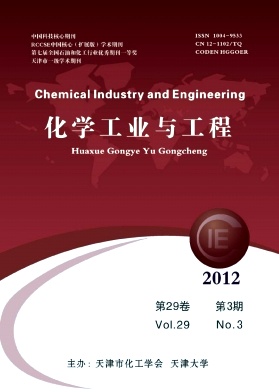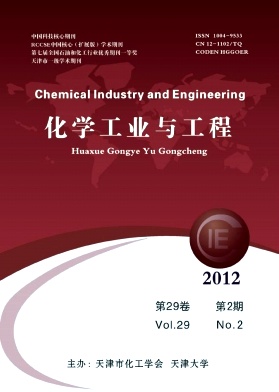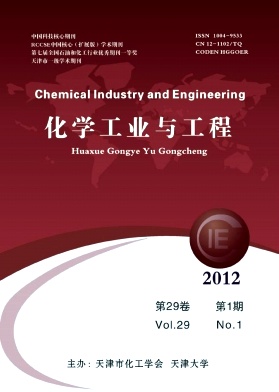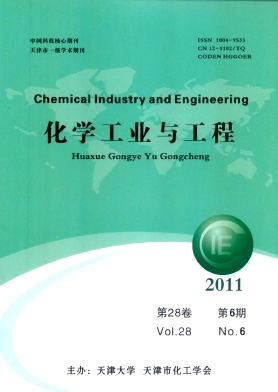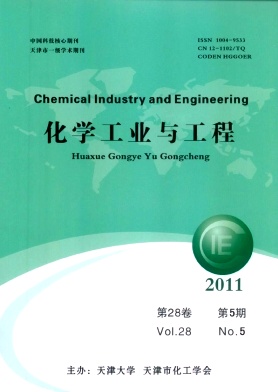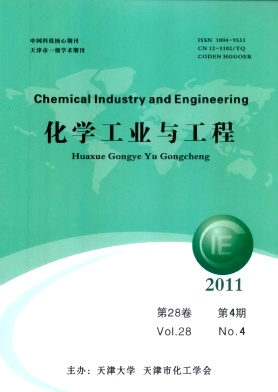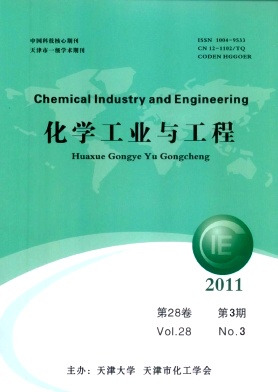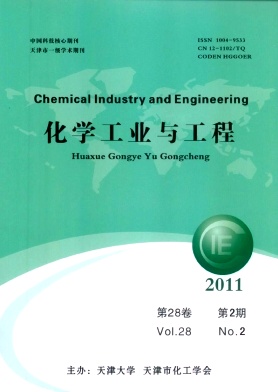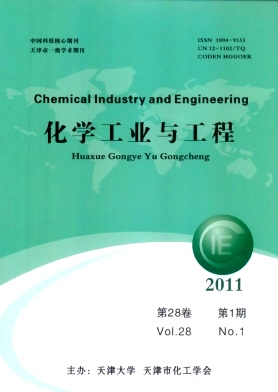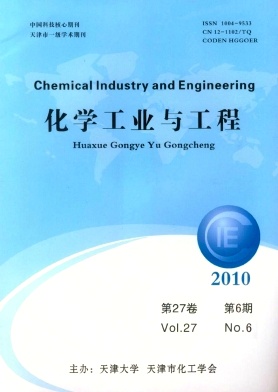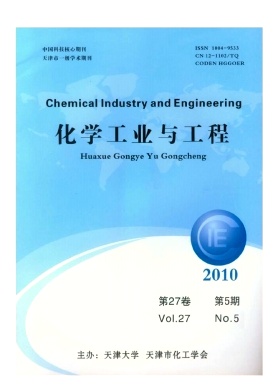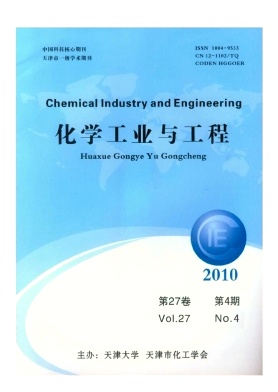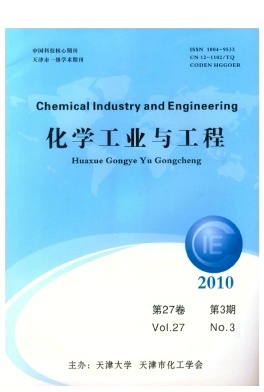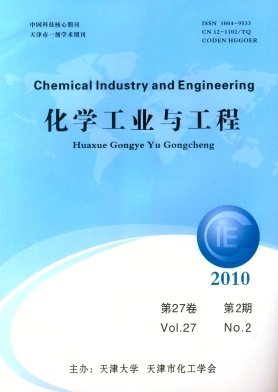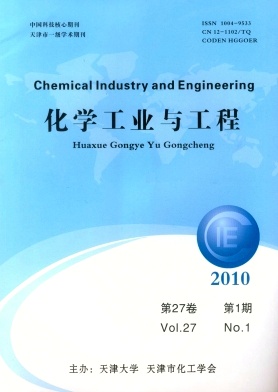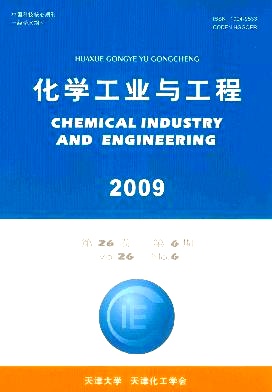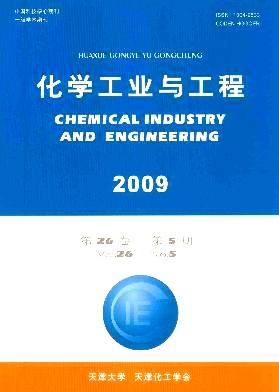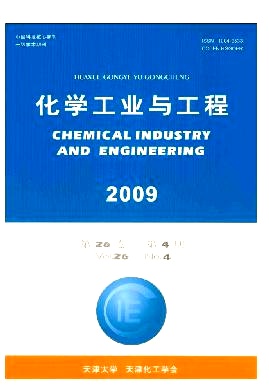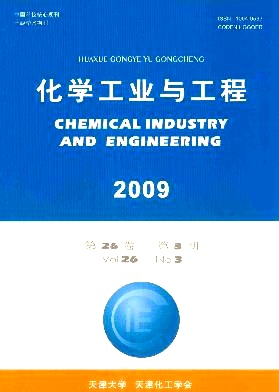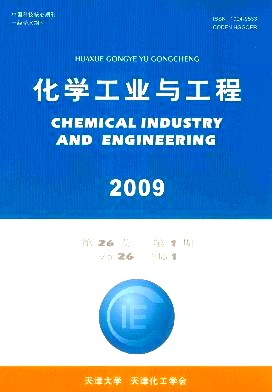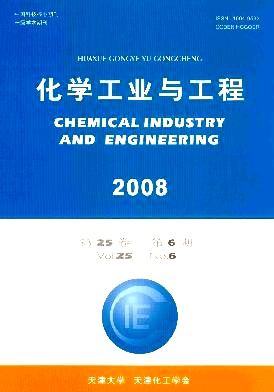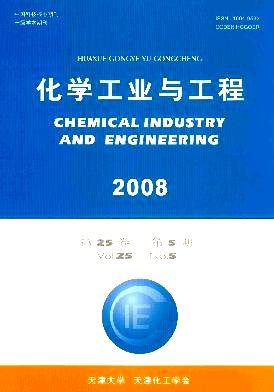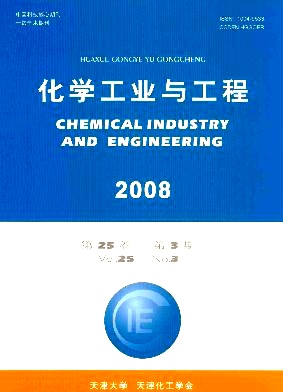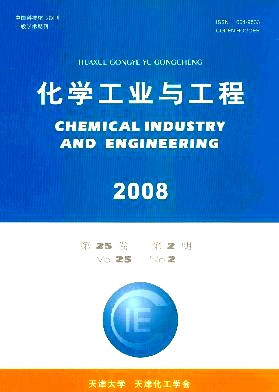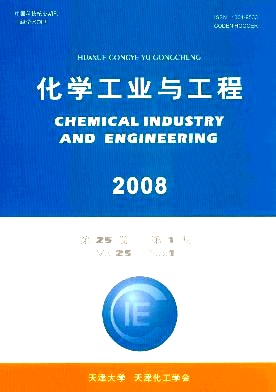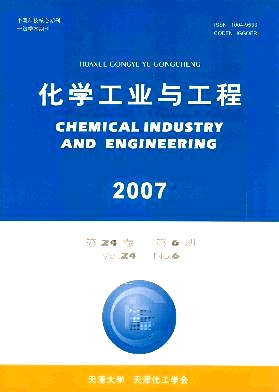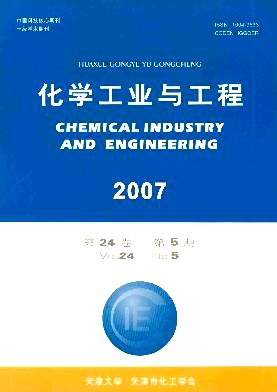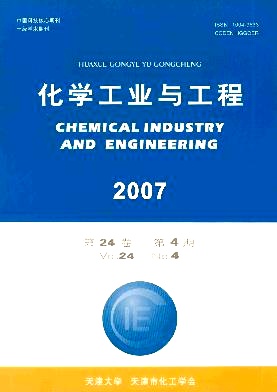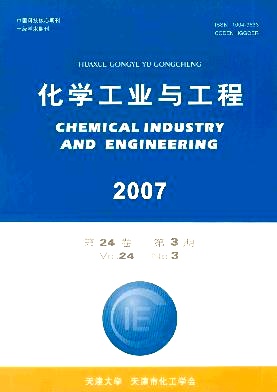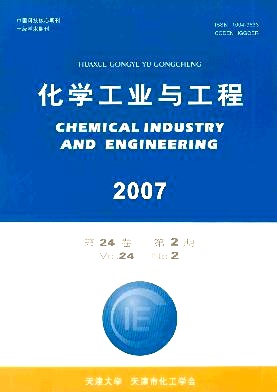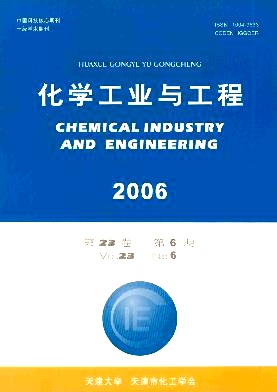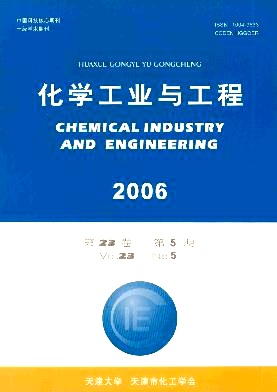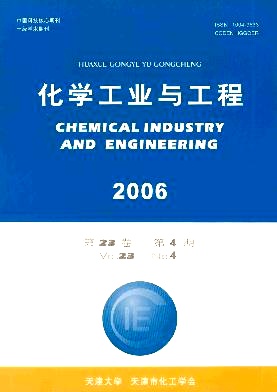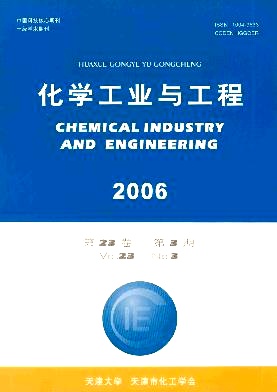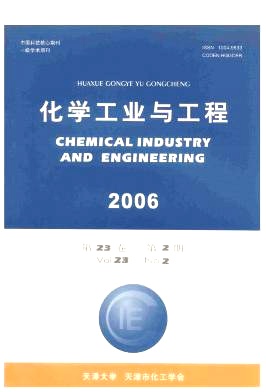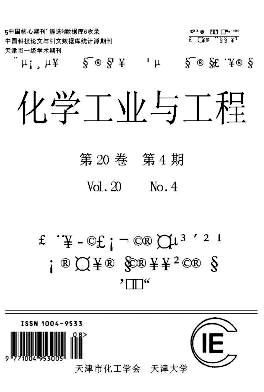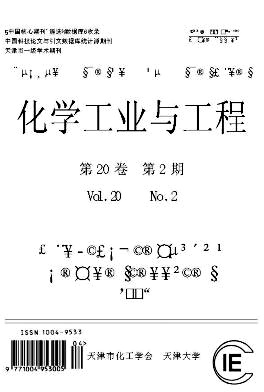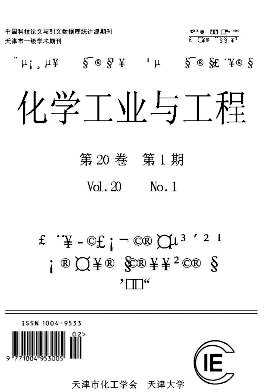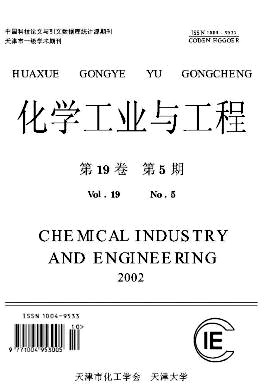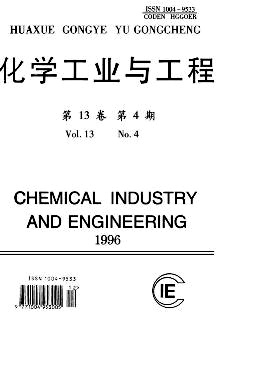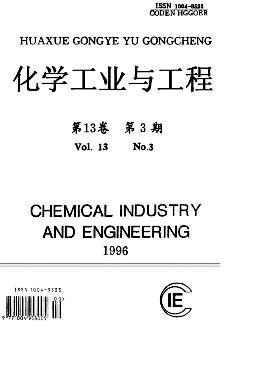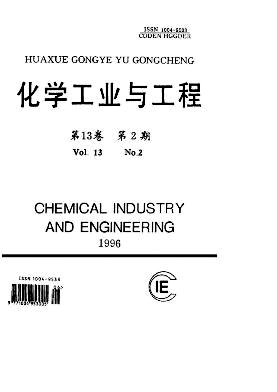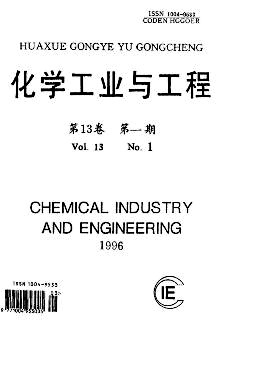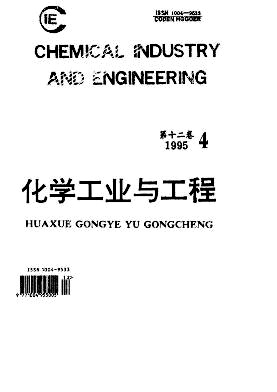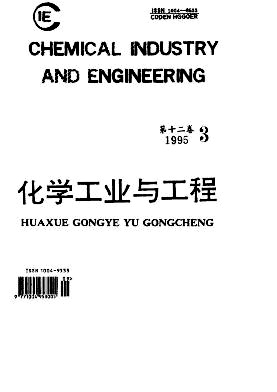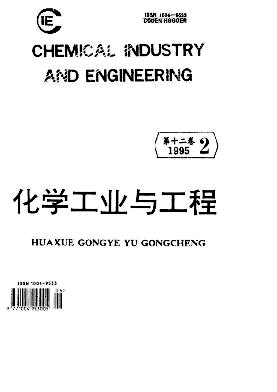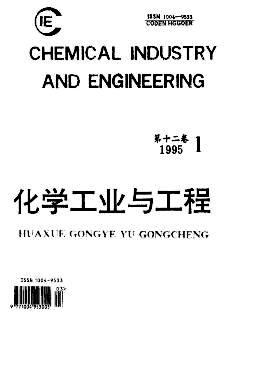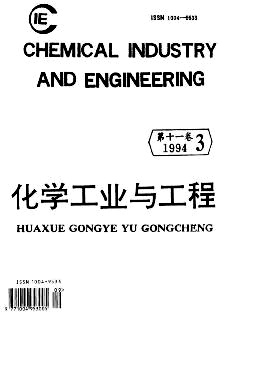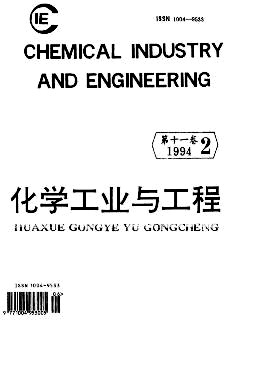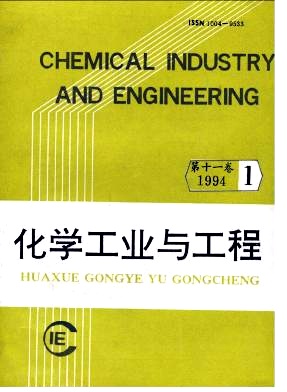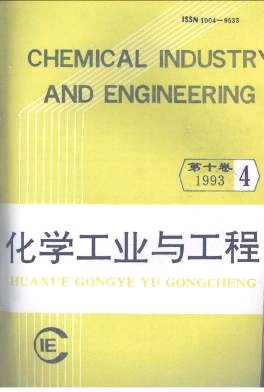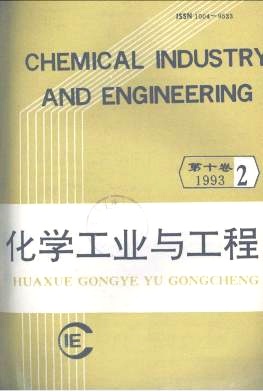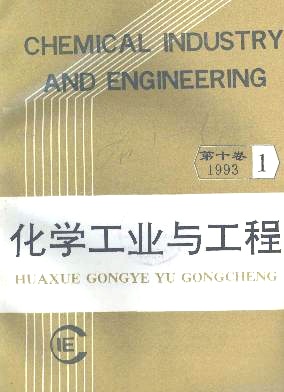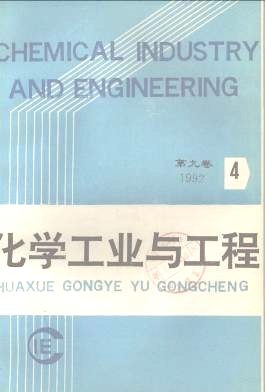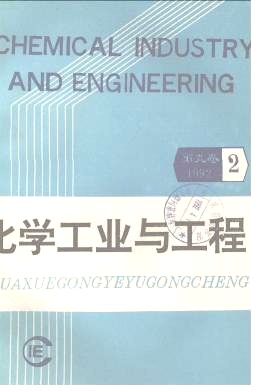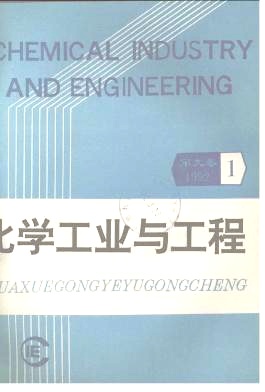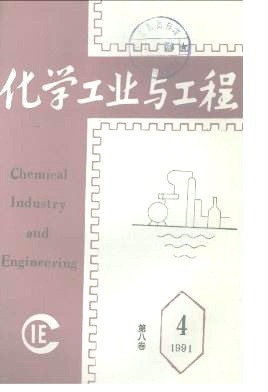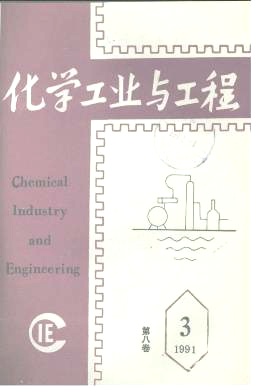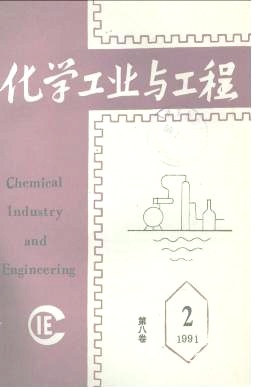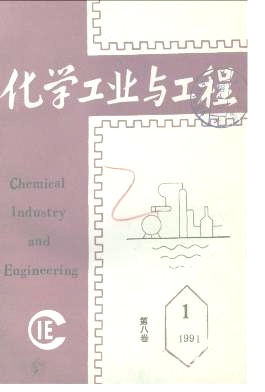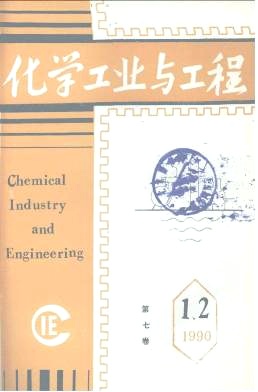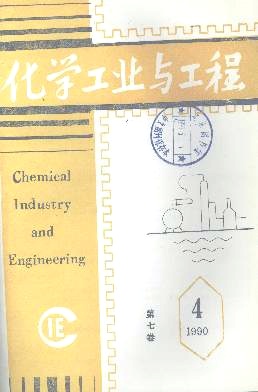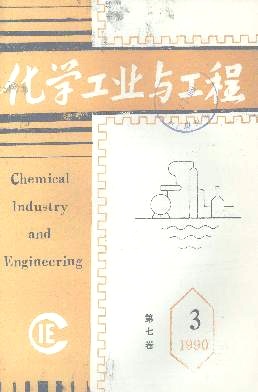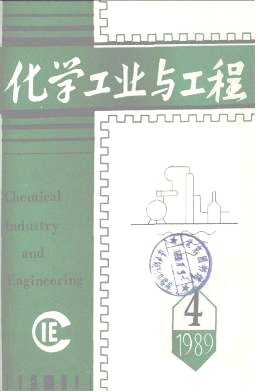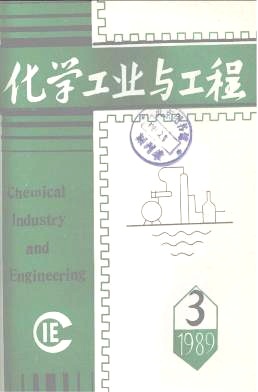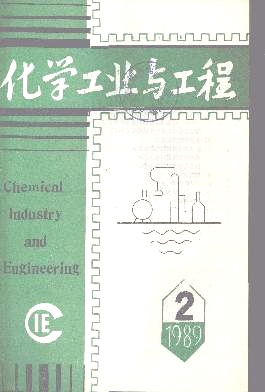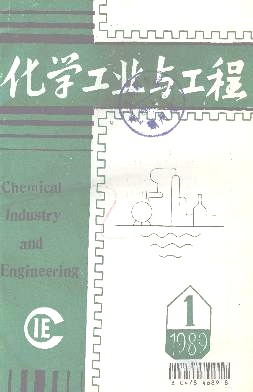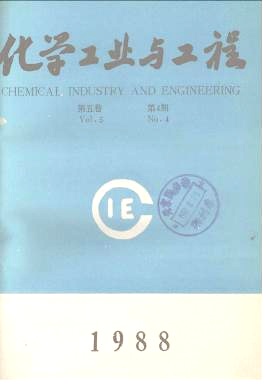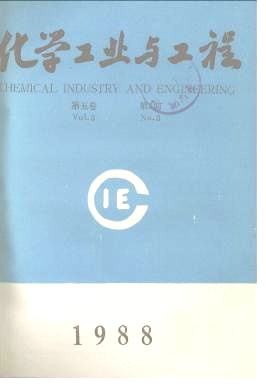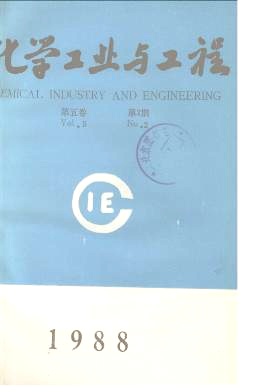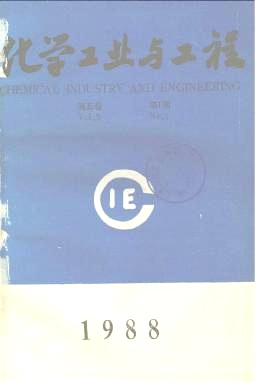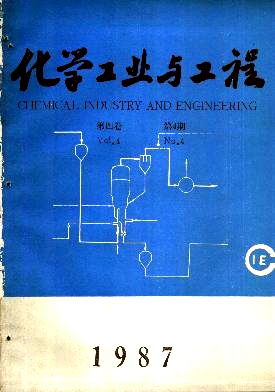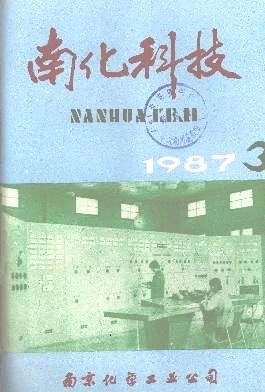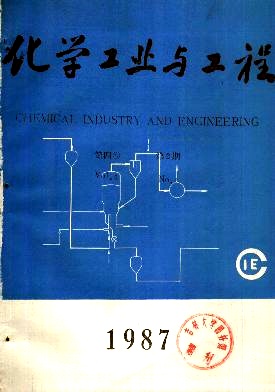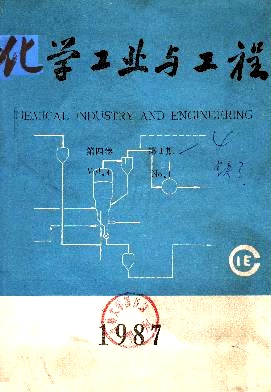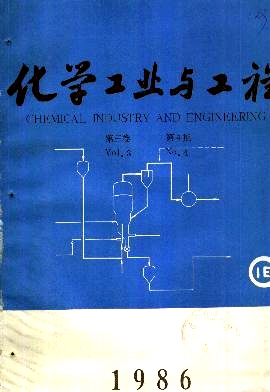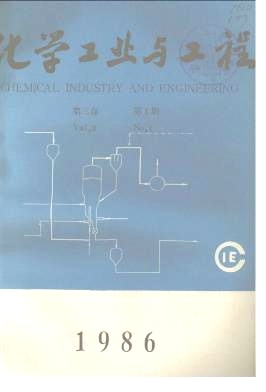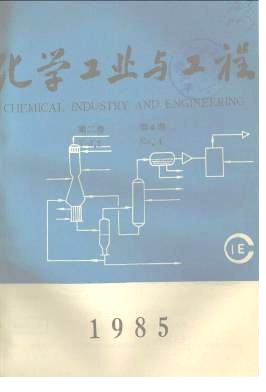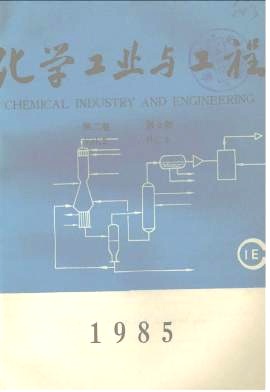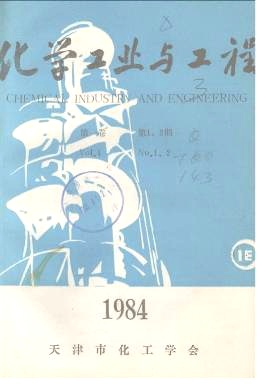Introduction

Chemical Industry and Engineering
ISSN 1004-9533
CN 12-1102/TQ
Supervised by: Tianjin Bohai Chemical Industry Group Co., Ltd.
Sponsored by: Chemical Industry and Engineering Society of Tianjin; Tianjin University
Year of Establishment: 1984
Language: Chinese
Publication Frequency: Bimonthly
Place of Publication: Tianjin
Domestic Postal Distribution Code:18-156
Overseas Postal Distribution Code:BM3064

Hot Paper
Research progress on catalytic transformation of HMF over metal-zeolite catalysts
MA Xueqin;CHEN Jun;ZHANG Xingguang;Biomass is an important sort of renewable green resources, and its efficient utilization is a key pathway to achieve carbon neutrality and expands the sources of new energy and material. Among biomass-derived platform molecules, 5-hydroxymethylfurfural(HMF) stands out as a key compound. Its value-added conversion processes include hydrogenation/hydrogenolysis, oxidation, and coupling reactions, where supported metal catalysts play an indispensable role. Among them, zeolite materials, with their highly-ordered pore structures, tunable acidic sites, and excellent metal dispersion capabilities, are popularly used as catalysts or supports in heterogeneous catalysis. Therefore, this review first introduces the preparation methods of metal-zeolite catalysts and analyzes their advantages and limitations, and then summarizes the recent research progress on metal-zeolite catalysts in the selective catalytic conversion of HMF, with a particular focus on their core characteristics:(1) nanoconfinement effect of zeolites,(2) metal-zeolite acid synergistic effects, and(3) metal-zeolite support interface interactions. Finally, future development directions for metal-zeolite catalysts in selective HMF catalysis are prospected.
Recent advances in the preparation of carbon encapsulated catalysts and catalytic applications
YU Weixiang;QIAN Ligang;SHUAI Changhui;PAN Jun;NIE Jing;WANG Changsheng;SHI Ming;CUI Yaosen;WAN Dongchuang;LU Chunshan;Zhejiang University of Technology;Carbon-encapsulated metal catalysts can effectively improve the metal agglomeration, oxidation, sintering, acid leaching and sulfur poisoning of supported metal catalysts in the reaction system. The stability of catalyst structure and reaction is greatly improved, so the carbon-encapsulated metal catalyst has a good industrial application prospect in the field of catalysis. This review elaborates on the preparation methods and diverse catalytic applications of carbon-encapsulated metal catalysts. In terms of preparation methods, it delineates the characteristics of direct pyrolysis and indirect pyrolysis methods, The catalysts prepared by different preparation methods differ in metal components and carbon layers, resulting in corresponding changes in the electronic structure between metal and carbon layers. Carbon-encapsulated metal catalysts show unique catalytic performance in many catalytic fields. In terms of catalysts applications, this paper analyzes the performance of carbon-encapsulated metal catalysts in thermal catalysis, electrocatalysis, and photocatalysis reactions.
Hydrothermal stability of Zn-ZSM-5 and its effect on the coupling reaction of n-butane and CO_2
SUN Xuke;LIU Rongsheng;FAN Gaili;YU Zhengxi;As an excellent catalyst for the coupling reaction of alkanes and CO2 to produce high-value bulk chemical products, Zn-ZSM-5 will be exposed to high-temperature hydrothermal environment for a long time during the reaction process. Therefore, the changes in the physicochemical properties of the catalyst under high-temperature water steam treatment and its impact on the reaction performance are crucial to clarify the reasonable use conditions of the catalyst. This article systematically characterizes the structure and properties, acid centers, and the existence status of Zn species on Zn-ZSM-5 catalysts under different high-temperature water steam treatment conditions using various techniques, and the effect of physicochemical properties of catalyst on the coupling reaction is also discussed. The results show that after high-temperature water steam treatment, the four coordinated frame Al in Zn-ZSM-5 is significantly removed, leading to a decrease in the crystallinity of the molecular sieve and the appearance of mesoporous structure. The content of B-and L-acid centers in the sample decrease, and the distribution of Si species change. Simultaneously, the frame Zn(Znfr) species with good catalytic activity relying on the existence of frame Al are transformed into ZnO species, resulting in a decrease in the catalytic activity of the catalyst, but the reaction stability is improved. This article provides guidance for the further improvement of catalysts for the coupling reaction of alkanes and CO2.
Syngas production from photothermal CO2 reduction over Ni/Mn0.7Ce0.3O2 catalyst
JIANG Yu;WANG Xueke;CAI Weijie;In this work, Mn0.7Ce0.3O2 solid solution was synthesized by hydrothermal method. Subsequently, a series of Ni/Mn0.7Ce0.3O2 catalysts were prepared by wet-impregnation and deposition-precipitation method, respectively. Moreover, syngas production from bio-ethanol reforming with greenhouse gas CO2 under the photothermal coupling conditions was carried out over the as-prepared catalysts. Particularly, a series of characterization techniques including XRD, H_2-TPR, O_2-TPD, H_2-TPD, CO_2-TPD, XPS and SEM were conducted in order to explore the influence of catalyst preparation method on its physicochemical properties as well as the catalytic behavior. The results indicated that Ni/Mn0.7Ce0.3O2 catalyst prepared by the deposition-precipitation method exhibited the higher dispersion of active metal, stronger active metal Ni-support(Mn, Ce) interaction and more strong basic sites, thereby possessing the better catalytic activity/selectivity in photothermal ethanol dry reforming reaction.
Effect of support preparation methods on the structure and catalytic performance of Co/CeO_2-Al2O3 for ammonia decomposition
FU Yaqian;WANG Weiwen;In the process of ammonia decomposition for hydrogen production, transition metals play a crucial role. Meanwhile, the selection of an appropriate support is crucial in regulating the surface properties of active metals and enhancing the activity and stability of the catalyst. Cobalt-supported CeO_2-Al2O3 supports were prepared using precipitation, impregnation, and sol-gel methods. The performance of the catalysts was evaluated within a temperature range of 350 ℃ to 650 ℃ and their physicochemical properties were characterized using BET, XRD, SEM, and H_2-TPR. The results revealed that the 10%Co/(1∶2)CeO_2-Al2O3 catalyst prepared by the precipitation method exhibited excellent catalytic performance, achieving an ammonia conversion rate of 85% and a hydrogen yield of 8.6 mmol·g-1·min-1 at 550 ℃ and GHSV 9 000 mL·h-1·g-1. This superior performance was attributed to the larger specific surface area exhibited by the CeO_2-Al2O3 support prepared by the precipitation method, which facilitated the uniform dispersion of the active metal Co. According to TPD data, the catalyst prepared by precipitation exhibited stronger alkaline sites, providing a suitable alkalinity for the ammonia decomposition reaction.
Optimization of separation section of the ethylene trimerization process by dividing wall column technology
WANG Yating;SHEN Lihua;ZHANG Yu;LI Xingang;The existing process for preparing 1-hexene by ethylene trimerization was simulated and optimized using a new energy-saving technology of heat pump and adjacent tower. The optimal operating parameters were obtained using sensitivity analysis tools, and the conventional adjacent tower, conventional heat pump adjacent tower, and adjacent tower with intermediate condenser were simulated separately.Simulation data shows that compared with conventional distillation columns, the total energy consumption of adjacent columns has been reduced by 23. 66%, and the annual total cost(TAC) has been saved by16. 66%. Although the total energy consumption of the adjacent tower of the conventional heat pump increased by 4. 97%, TAC saved 12. 54%. The total energy consumption of the adjacent tower with an intermediate condenser decreased by 23. 13%, and TAC saved 16. 21%.
[Downloads: 72 ] [Citations: 0 ] [Reads: 0 ] HTML PDF Cite this article
Research progress in predicting the hazardous characteristics of chemicals based on quantitative structure-property relationship
CAO Zhengrong;LI Haosen;HAN Xiaoyi;WEI Hongyuan;HAO Lin;ZHUZhenxing;The prediction of compound properties using quantitative structure-property relationship(QSPR) has become a research hotspot in recent years,which effectively solves the problems of high experimental danger and high operation cost.To develop QSPR prediction models in depth,the development history of QSPR is reviewed,and the research progress of QSPR in the prediction of hazardous properties of pure substances and mixtures is summarized.It is shown that the QSPR model incorporating machine learning significantly improves the prediction capability,exhibits stronger prediction potential,breaks the bottleneck of the traditional QSPR model,and becomes a theoretical computational prediction method with higher prediction accuracy and wider scope of application.In addition,the current application of QSPR in predicting the hazardous properties of mixtures is not mature enough,and QSPR combined with machine learning is expected to provide more reliable and accurate results for the prediction of the properties of mixtures in the future,to provide important data support for practical chemical risk assessment and safety design.
[Downloads: 187 ] [Citations: 0 ] [Reads: 0 ] HTML PDF Cite this article
Activation of peroxydisulfate for bisphenol A degradation in salinity wastewater by nitrogen-doped carbon nanotubes
CHEN Man;LI Yang;FAN Xiaobin;XIA Qing;PENG Wenchao;Advanced oxidation technology( AOPs) is extensively employed in the treatment of organic wastewater. However, in the high salinity system, its degradation efficiency is easily influenced and will also cause secondary pollution. Nitrogen-doped carbon nanotubes( N-CNT) were synthesized by hightemperature calcination through the modification of commercial carbon nanotubes(CNTs) with melamine as the nitrogen source. The structure and composition of these materials were characterized using N2adsorption-desorption, Raman, XPS, and EIS tests. The results show that nitrogen atoms have been doped into the carbon skeleton of carbon nanotubes, which changes the structure of carbon nanotubes, increases the specific surface area, and enhances the conductivity and hydrophilicity. The modified carbon nanotubes were then utilized as catalysts to activate peroxydisulfate(PDS) for the degradation of bisphenol A(BPA). With the presence of 50 g·L-1 NaCl, the reaction rate constant of the N-CNT/PDS system is 10. 2 times larger than that of the CNT-raw/PDS system. Open circuit potential testing( OCPT) reveals significant enhancement in nonradical electron transfer processes within the N-CNT/PDS system. This provides valuable insights for the treatment of pollutants in high-salt wastewater.
[Downloads: 293 ] [Citations: 0 ] [Reads: 0 ] HTML PDF Cite this article
Solvent dependent HAT and OAT reactivity of pyrite
FAN Weiwei;WU Songhai;ZHANG Xuebin;CHEN Lunbo;HAN Xu;Based on the most popular theory of iron-sulfur world in the origin of life,the surface reactivity of pyrite(FeS2) has become a hot topic in the field of catalysis in natural environment.We studied the oxidative species affecting the hydrogen atom transfer(HAT) and oxygen atom transfer(OAT) reactivity of pyrite in CH3 CN and CH3 CN/H2 O mixtures.The results showed that FeS2 had high HAT and OAT reactivity in both CH3 CN and CH3 CN/H2 O mixtures.The H2 O gradient test of benzyl alcohol showed that appropriate H2 O could promote the HAT reaction,and the quenching test showed that superoxo species are the primary oxidants in the HAT reaction of benzyl alcohol.The oxidation experiments of benzyl methyl sulfide(MPS),benzyl methyl sulfoxide(PMSO) and cyclohexene showed that the OAT activity in CH3 CN was higher.Experiments on diethyl p-phenylenediamine sulfate(DPD) and Raman spectra show that≡Fe(Ⅲ)—OO~· superoxo,Fe(Ⅲ)—OOH peroxo and ≡Fe(Ⅳ)=O oxo exist on pyrite in CH3 CN solvent.There are≡Fe(Ⅲ)—OOH peroxo and≡ Fe(Ⅳ)=0 oxo on the surface of pyrite in CH3 CN/H2 O mixed solvent.This study enriches our understanding of the reactive species on pyrite surfaces in different solvents,providing new perspectives for better exploration of active species that promote HAT and OAT reactions.
[Downloads: 31 ] [Citations: 0 ] [Reads: 0 ] HTML PDF Cite this article
Study on the synthesis process and UV-curing kinetics of transparent thiol-functional silicone oil
LIU Zhu;LIN Lizhong;YAN Fangjie;QIANG Na;LIU Xiaofei;WU Qi;Fist, a solid super acid CF3SO3-&SO24-/TO2loaded with sulfuric acidand trifluoromethanesulfonic acid(CF3SO3). With this as the catalyst, a transparent sulfhydryl silicone oil of yield more than 90% was prepared by using octamethyl cyclotetrasiloxane(D4), 3-mercaptopropylmethyldimethoxysilane(KH802) and hexamethyldisiloxane(MM) as raw materials. Comparing with the frequently-used concentrated hydrochloric acid, concentrated sulfuric acid and trifluoromethane sulfonic acid catalyst, we find that CF3SO3-&SO24-/TiO2has higher activity and can be reused for more than 7 times. The structure of PDMS-SH was characterized by Fourier Transform Infrared Spectroscopy(FTIR), Nuclear Magnetic Resonance Hydrogen Spectroscopy(1H NMR) and Gel Permeation Chromatography(GPC), and performance such as viscosity, density and refractive index were also tested. The results indicate that the PDMS-SH are successfully prepared and have excellent transparency,storage stability and UV-curing rate. The visible light transmittance can reach more than 80%, and the viscosity has not increased obviously at room temperature for 6 months. it can be rapidly cured within 100 s when the molar ratio of the thiol group in the PDMS-SH to the vinyl group in the vinyl-terminated silicone oil is 1. 2 ∶ 1. 0. This preparation method of PDMS-SH breaks through the existing preparation bottleneck of UV-curing silicone oil, and it is also expected to provide a new preparation method and industrialization path reference for the industrialization of UV-curing silicone raw materials.
[Downloads: 98 ] [Citations: 0 ] [Reads: 0 ] HTML PDF Cite this article
Basic Principle,Advance and Current Application Situation of Sol-Gel Method
WANG Juan,LI Chen,XU Bo(Huainan Normal University,Huainan 232001,Anhui Province,China)Sol-gel method is a method for material preparation under mild condition.In this paper,basic principles of sol-gel method and the main step are briefly described,the application and the prospects for development of sol-gel method in the of preparation process compound materials are discussed.
[Downloads: 19,500 ] [Citations: 742 ] [Reads: 20 ] HTML PDF Cite this article
A Review of Studies on the Discharging Dispersion of Flammable and Toxic Gases
Ding Xinwei Wang Shulan Xu Guoqing (Dalean University of Technology,Dalian 116012)The computing models and experiments of flammable or toxic gas dispersion in the atmosphere are summarized.The models include Gaussian plume/puff model,B.M.model,Sutton model and FEM3 model.The experiments include Burros,Coyote,Desert Tortoise Goldfish etc.
Progress in the Development and Application of Reverse Osmosis Membrane Technology
XU Jun1,2,3,WANG Zhi1,2,3,WANG Ji-xiao1,2,3,WANG Shi-chang1,3(1.School of Chemical Engineering and Technology,Tianjin University,Chemical Engineering Research Center,Tianjin 300072,China;2.State Key Laboratory of Chemical Engineering(Tianjin University),Tianjin 300072,China;3.Tianjin Key Laboratory of Membrane Science and Desalination Technology,Tianjin 300072,China)Reverse osmosis membrane technology,a new and widely used separation technology arose in 1 960 s,is one of the most advanced separation technologies at present.Reverse osmosis is the inverse process of osmosis and is driven by pressure.In this paper,the background and the development of re-verse osmosis membrane technology are introduced,and its present research is mainly discussed,and its applications in sweater and brackish water desalination,pure water preparation,pharmacy and chemical industry wastewater treatment are described.Finally,the existing problems and future development trends are analyzed.
[Downloads: 11,281 ] [Citations: 284 ] [Reads: 24 ] HTML PDF Cite this article
Survey of Researches on Scale Inhibition Mechanism of Scale Inhibitor
WANG Rui 1, ZHANG Qi 1, DING Jie 2, SHEN Zi qiu 2 (1.Chem.Eng.Department, School of Sci. & Tech., Hainan University, Hainan Haikou 570228,China; 2.Research Institute of Chem. Eng., Dalian University of Technology, Liaoning Dalian 116012,China)Firstly, a brief retrospect was given on the development of scale inhibitors. Then, some aspects related to the research of scale inhibition mechanism of scale inhibitors and evaluation methods of the performance of scale inhibitors, as wellas the retarding effect on saline water deposition of scale inhibitors were reviewed. Based on the above survey, some aspects remain to be investigated further were proposed.
The Current Status and the Developing Trends of Carbon Dioxide Treating Technologies
LI Tian-cheng\+1, FEN Xia\+2, LI Xin-gang\+1 (1.School of Chemical Engineering,Tianjin University,Tianjin 300072,China; 2.Taiyuan Fereilizer Plant,Shanxi Taiyuan 030021,China)The current status and the developing trends in future of carbon dioxide treating technologies were introduced in this article. Furthermore,the effective ways to solve “greenhouse effect” in the 21centery can be mainly biological methods in separating and fixing carbon dioxide in the air and physical or chemical methods in separating and processing the combusted gases.
Basic Principle,Advance and Current Application Situation of Sol-Gel Method
WANG Juan,LI Chen,XU Bo(Huainan Normal University,Huainan 232001,Anhui Province,China)Sol-gel method is a method for material preparation under mild condition.In this paper,basic principles of sol-gel method and the main step are briefly described,the application and the prospects for development of sol-gel method in the of preparation process compound materials are discussed.
[Downloads: 19,500 ] [Citations: 742 ] [Reads: 20 ] HTML PDF Cite this article
Progress in the Development and Application of Reverse Osmosis Membrane Technology
XU Jun1,2,3,WANG Zhi1,2,3,WANG Ji-xiao1,2,3,WANG Shi-chang1,3(1.School of Chemical Engineering and Technology,Tianjin University,Chemical Engineering Research Center,Tianjin 300072,China;2.State Key Laboratory of Chemical Engineering(Tianjin University),Tianjin 300072,China;3.Tianjin Key Laboratory of Membrane Science and Desalination Technology,Tianjin 300072,China)Reverse osmosis membrane technology,a new and widely used separation technology arose in 1 960 s,is one of the most advanced separation technologies at present.Reverse osmosis is the inverse process of osmosis and is driven by pressure.In this paper,the background and the development of re-verse osmosis membrane technology are introduced,and its present research is mainly discussed,and its applications in sweater and brackish water desalination,pure water preparation,pharmacy and chemical industry wastewater treatment are described.Finally,the existing problems and future development trends are analyzed.
[Downloads: 11,281 ] [Citations: 284 ] [Reads: 24 ] HTML PDF Cite this article
Status and Prospect of Chinese Seawater Desalination Technology
FENG Hou-jun,XIE Chun-gang(Institute of Seawater Desalination and Multipurpose Utilization,State Oceanic Administration,Tianjin 300192,China)This paper analyzes the state-of-the-art and status quo of seawater desalination technology in China during recent years,including multi-stage flash,low temperature multi-effect distillation and reverse osmosis,and discusses current problems and gaps by a comparison between China and other countries with advanced seawater desalination technology.Furthermore,combining domestic needs for seawater desalination technology,this paper also presents the future possible direction and goals of Chinese seawater desalination.
Study on Preparation Technology of Nanoscale TiO2 with Sol-Gel Method
LIAO Dong-liang1,XIAO Xin-yan*1,ZHANG Hui-ping1,WAN Cai-xia2,CHEN Huan-qin1(1.Institute of Chem.Eng,South China University of Technology;2.Department of Applied Chemistry,South China University of Technology,Guangdong Guangzhou 510640,China)In this paper,we prepared nanoscale TiO2 with Ti(OC4H9)4 through solgel method.With the work on several important factors,got the optimal technological conditions for preparing nanoscale TiO2,that is nTi(OC4H9)4∶nH2O∶nC2H5(OH)=1∶2~3∶6~8,the pH of mixture should be adjusted to between 2 and 3,H2O and part of C2H5(OH) mixture should be feed slowly. The suitable temperature of hydrolysis and gel reaction is between 25℃~30℃.
Research progress on the application of silicon-carbon anode materials in lithium-ion batteries
WANG Juan;ZHANG Xianglan;The structure and properties of anode materials are crucial for the capacity and performance of lithium-ion batteries. Silicon/carbon composites are highly regarded as promising anode materials for next-generation batteries due to their high specific capacity. However, the significant volume expansion during cycling hinders their commercialization. The structure and methods to synthesize silicon/carbon materials are key to addressing this issue. This paper provides an review of the lithium storage and failure mechanisms of silicon anodes, summarizes recent progress in silicon carbon anode materials for lithium-ion batteries, focuses on structural design and preparation methods, and assesses the future commercial prospects of silicon/carbon composites.
Tracking the information about your manuscript
Communicate with the editorial office
Query manuscript payment status Editor LoginCollecting, editing, reviewing and other affairs offices
Managing manuscripts
Managing author information and external review Expert Information Reviewer LoginOnline Review
Online Communication with the Editorial Department
Announcements
News
Downloads
Links
Page Views
Page views today: 299
